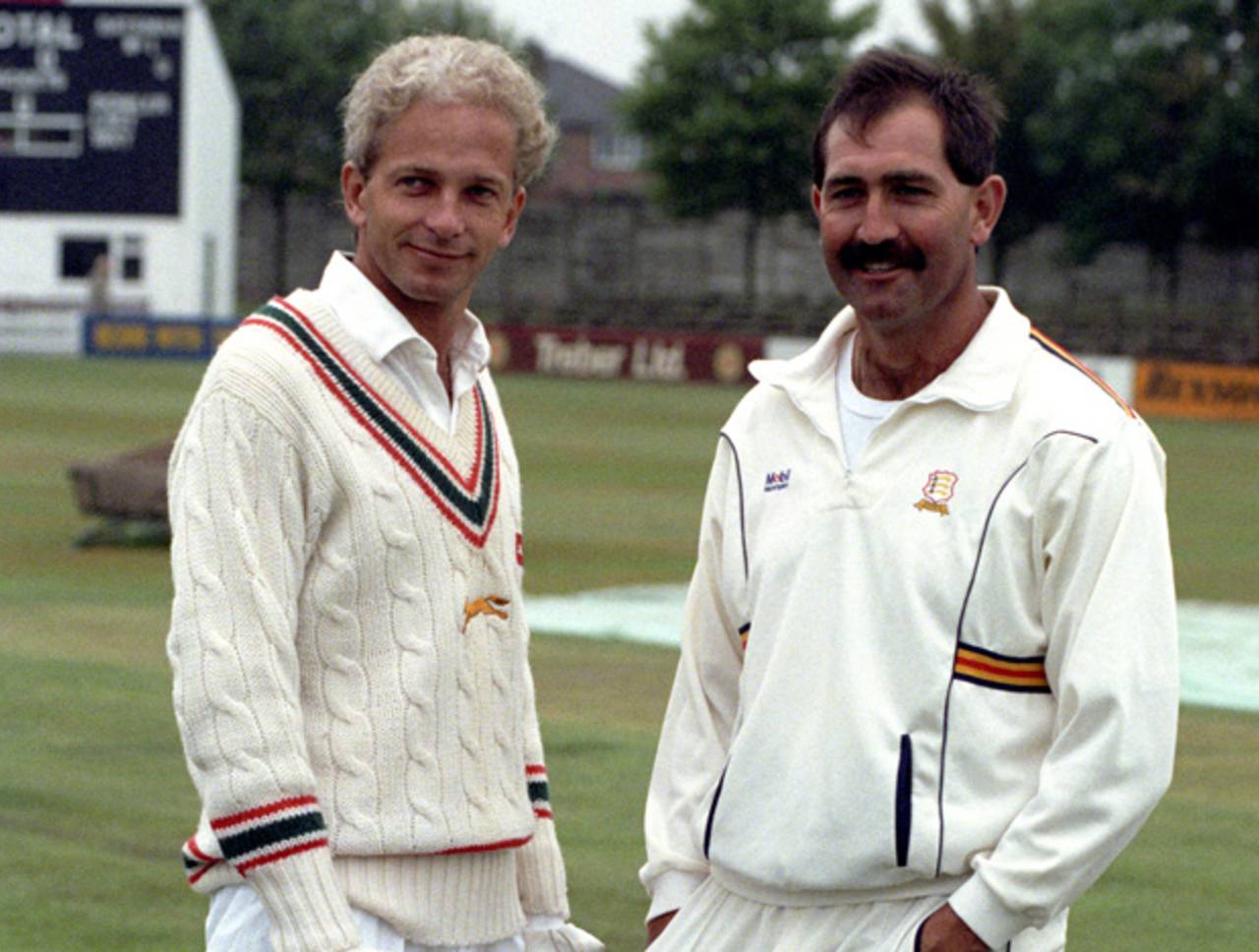When trying to describe the style and character of
David Gower's batting, you use words such as "graceful", "elegant", "insouciant" to capture his ethereal majesty.
To describe
Graham Gooch, the words that spring to my mind are: "hebetudinous", "sombre", "formaldehyde".
It's quite a contrast.
One was as free-flowing as hot butter, the other as dense as a jar of jam. One played to the strains of Strauss. The other was Wagner in helicopters. One had a curly angel's mien. The other a barbarian's uncompromising 'tache. One was the England of yeomen and yokels. The other of dandies and fops. One skimmed. The other soared.
And yet ask an Englishman which English batting innings he rates the best. It's Gooch's 154
at Headingley.
It was Gooch who got the triple-century, Gooch who fought to give England's batting the steely spine it has today, not the supine style of ages past.
For many, the world splits into Gower and Gooch.
There is, however, one confrontation which brought both worlds colliding together in a drama to illustrate the deep divergences of the human character: the
1991 Tiger Moth incident.
England were
playing Queensland before the fourth Test in Adelaide. The team, captained by Gooch, had already lost two of the first three Tests. But Gower had been in champagne form, scoring two hundreds.
The Carrara Oval was close to the local aerodrome and the players had already seen planes flying above the stadium at around 2000 feet. Unwilling to pass up the opportunity, Gower snuck off with his cohort, John Morris, and commandeered a Tiger Moth biplane to buzz the ground. He didn't tell the Margaret Thatcher-loving Gooch, of course.
Gower said: "I did think of asking Graham, but I knew he would be unhappy with us flying, and as that was the entire point of the exercise, I decided it was best not to mention it at all."
With the debonair charm of a Lord Flashheart, the aristocratic cricketer persuaded his pilot to swoop down onto the stadium to a height of 200 feet, scaring players, crowd and the umpires witless.
Gooch was (presumably) at that time sitting on the England balcony, sipping a cup of hot tea. One can only imagine the look of horror as he saw this warplane diving towards him at a steady 80 miles an hour. His fury was raised, and he bustled around blue-faced, trying to find the cause of the alarm, urging the manager to convene a team meeting to punish the wayward son.
Gower and Morris were both summoned before a late-night team management committee, led by the now wild Gooch, who later commented: "They let us down badly. What if the rest of the team, especially the younger ones, thought that sort of behaviour was par for the course?"
Indeed, what if? One envisages legions of sub-World War biplanes diving on the cricket grounds of the world. Champagne and caviar replacing protein shakes and roughage. The Hittites resurrected. Who knows what other insanity.
Sadly this was not to be. For Gower and Morris were punished. The consequences of this were a £1000 fine, and a divorce in relations between the two Gs.
In the event, this marked the start of the end of Gower's career. His performances over the rest of that tour were poor, ending with a next-highest score of 28 not out.
Gooch's antipathy towards Gower led to his removal from the 1992-93 tour of India. It was a sad day, one on which many people fell a little out of love with cricket. Style was overtaken by rigour. Imagination by facts.
It was like breaking a tiger moth on a wheel.
Gooch, of course, went on to become England's highest Test scorer. The moustache was seen hovering in cricket grounds until the year 2000. And after that he has become the acknowledged mentor behind players like Alastair Cook and Ravi Bopara.
Gower turned to Sky Sports.
The Gooch-Gower contrast was a microcosm of the traditional professional-gentleman dichotomy. It split sides. It was, for me, the end of style. Professionalism took over.
The question is who has served England cricket better - a Gower or Gooch. I don't know.
Instead, I'll leave the last, wistful word to Gower himself, from an interview in the Independent in 1995: "I was never destined to be on the ball 100% of the time. I don't have the same ability that Graham Gooch has, to produce something very close to his best every time he plays. There were Test matches where I suddenly felt, at the end of it, 'Well, I wish I'd really been at that one.'"
A quite passionate follower of cricket and writer of articles, Safi Thind is one of the authors of the cricketerdiaries blog
